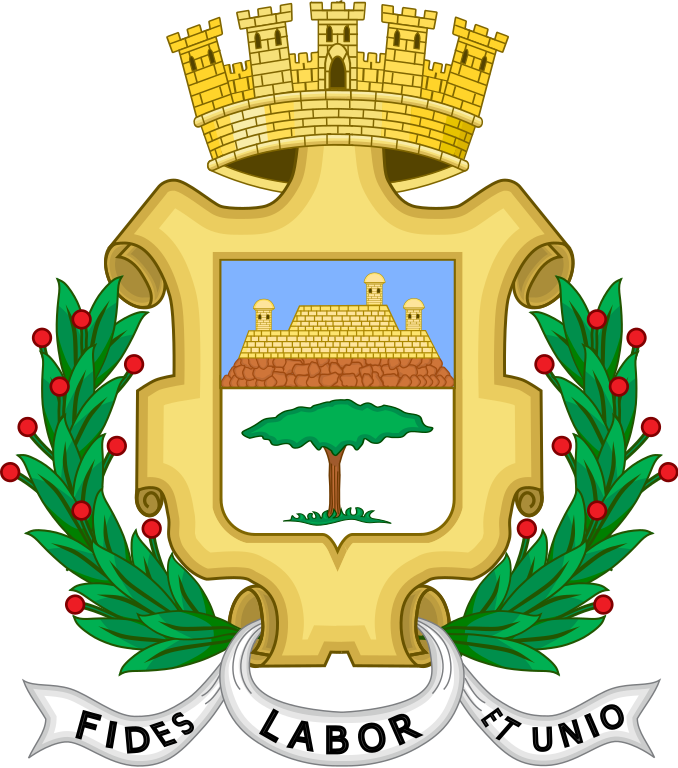As soon as the new colony was established, parcellation work was started on the existing land, plots were distributed to the settlers, and the location of the streets was determined. The plot where the Tomás Terry Theater is located today, was donated to Agustín de Santa Cruz. The merits and services rendered by him was considered by the State, so that he was appointed the Colonel of Militias and received the title of Count of Santa Cruz de Cumanayagua.
While the plots were distrubed to the settlers on April 22, 1819, the day of the foundation of Fernandina de Jagua, the place where the José Martí Park is located today, was taken as the starting point for the layout of the first streets, which limited the blocks of the land that was given to the settlers. It is said that Félix Bouyón, the frigate captain of the Royal Navy, took a majagua as the starting point for the layout of the first block of the entire town. Majagua is a forest tree of Cuba and Jamaica having variably hairy leaves and orange-yellow or orange-red flowers. The grassy plain with few trees (the savannah) around the majagua was determined as the area of the park of the newly founded town.
The park was occupying the area bordered by the streets San Carlos (Avenida 56), San Fernando (Avenida 54), Santa Isabel (Calle 29) and San Luis (Calle 27). Eventhough it was intended as the outer limit of the city, in a short time it became the main social activity center of the city. It was also used as the parade ground. Later, the place was called Plaza de Ramírez, in memory of Alejandro Ramírez (1777-1821), Intendant General of the Island, for his support to De Clouet in the foundation of a new colony.
The Colonia Fernandina de Jagua successively became a town (villa) in 1829, and a city in 1880. Subsequently, the city was renamed Cienfuegos after José Cienfuegos, Captain General of Cuba (1816–19).
Towards the middle of the 19th century, Cienfuegos became an important center for sugar, coffee, and tobacco production. Particularly the Cuban sugar oligarchy enriched its wealth when a railroad was built between Santa Clara and Cienfuegos between 1853 and 1860, but this prosperity was largely dependent on the use of slaves. When the Spanish government outlawed slavery in Cuba in 1886, the sugar industry in Cienfuegos went upside down, so that Cienfuegos economy had to diversify itself.
In the late 19th century, Cienfuegos played a significant role in the struggle for Cuban independence from Spain. José Martí, Cuba’s national hero, visited Cienfuegos in 1894 to gather support for the struggle. A year later, the Cuban War of Independence broke out, and Cienfuegos became a strategic center for the revolutionary forces led by General Máximo Gómez and Antonio Maceo.
In 1898, during the
Hispano-Cuban North American War and on the eve of US
intervention, three batteries of cannon and howitzer,
adapted to the terrain's topography, were built to
strengthen the harbor's defense system: the Loma de Jagua or
Vigía, that of the Villanueva lighthouse and that of
Carbonell, of which only the latter remained in its place as
a historical record.
The first combat between American and
Spanish forces took place on May 11, 1898, in the port of
Cienfuegos. The reason why Cienfuegos was chosen is that the
underwater communication cables connecting Cuba with Spain
and the Spanish-dominated regions in the Caribbean were
passing here. In preparation for the subsequent operation
against the main target, Santiago de Cuba, these cables
would be destroyed and the island's ability to communicate
with Spain would be restricted.
The battleships USS Marblehead and the
USS Nashville were assigned to this limited action. Despite
having a serious skirmish with Spanish soldiers, American
soldiers could cut two of the three cables. Thus,
communication between Cuba and Spain became seriously
affected.
During the uprising against Fulgencio Batista the city was bombed in retaliation on September 5, 1957.
After the revolution the city became an industrial center with the never-comleted Juraguá nuclear power plant, the Camilo Cienfuegos oil refinery , and the Carlos Marx cement factory.
In 1969 and 1970, a flotilla of Soviet naval vessels visited the city, which included two barges used to store and transport nuclear waste and a submarine maintenance vessel. Their visit was interpreted by the US as if the Soviets were planning to construct a submarine base in Cienfuegos. The conflict was solved by the withdrawal of the Soviet ships.
In 2005, UNESCO inscribed the Urban Historic Centre of
Cienfuegos on the World Heritage List, citing Cienfuegos as
the best extant example of the 19th-century early Spanish
Enlightenment implementation in urban planning.
 The
inner shield is quadrilateral and is divided
into two quarters. In the upper one, on the blue
field, appears the golden front of the Jagua
Fortress, and in the lower one, on the silver
field, a majagua tree. The body of the coat of
arms is topped by a mural crown of five castles
and two lateral bunches of laurel. The
inscription below the coat of arms reads fides,
labor et unió (faith, work and union) in Latin.
The
inner shield is quadrilateral and is divided
into two quarters. In the upper one, on the blue
field, appears the golden front of the Jagua
Fortress, and in the lower one, on the silver
field, a majagua tree. The body of the coat of
arms is topped by a mural crown of five castles
and two lateral bunches of laurel. The
inscription below the coat of arms reads fides,
labor et unió (faith, work and union) in Latin.This symbol was designed by Don Agustín de Santa Cruz in 1831. It was adopted by the City Hall on July 4, 1848, when the Villa de Cienfuegos was granted the right to use this coat of arms by the Royal Order of Isabel II on April 2, 1848.